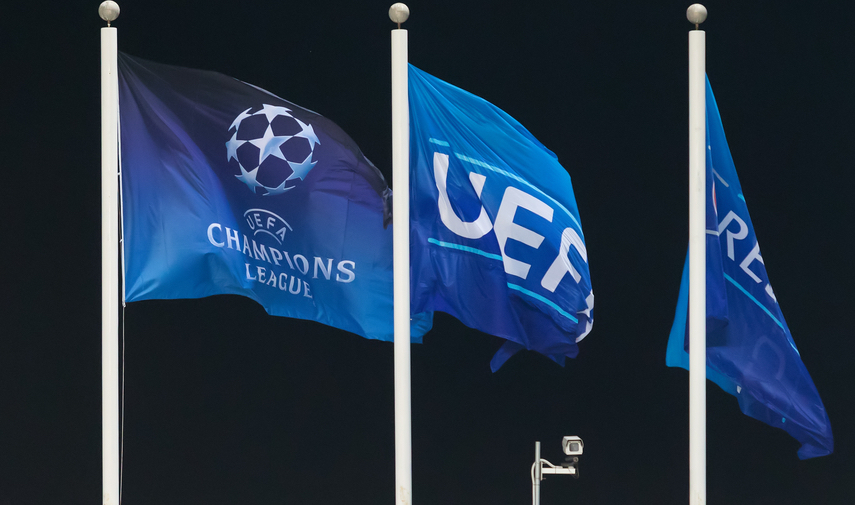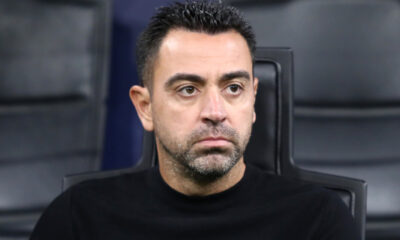Champions League
Champions League and other European cups will be in a new, supposedly more attractive format
From the 2024/2025 season, UEFA is completely changing the format of the European competitions, i.e. the Champions League, the Europa League and the European Conference League. So this year is the last year in which we will be able to watch the European Cups in the long-established format. What will this bring?

From the 2024/2025 season, UEFA is completely changing the format of the European competitions, i.e. the Champions League, the Europa League and the European Conference League. So this year is the last year in which we will be able to watch the European Cups in the long-established format. What will this bring?
The Champions League, the Europa League and the European Conference League will all be played in a completely different format from next season. This is a major change, probably the biggest since the 1992/93 season, when the change was made from a knockout competition to the current format. The change is being implemented, among other things, to discourage European big clubs from wanting to create their own competition.
UEFA (which is unlikely to succeed – author’s note) has been opposed to any competition outside its remit from the start, and has strongly condemned the clubs’ efforts to create a Super League. However, at the same time, in view of the perceived pressure, it decided to change the format of European competitions to satisfy the interests of the big European teams, who would then not want to join the Super League.
It seems that this won’t make any difference because although there is a new format for European competitions, the Superliga is gradually taking shape and current reports suggest that a Super League competition will indeed be formed and will attract interest from European teams (in fact, besides some European giants, teams such as PSV, Feyenoord, Benfica and Porto have expressed interest) and the founding members would be Spanish giants FC Barcelona and Real Madrid.
What will the new Champions League format look like? There will be several changes. Firstly, the number of teams will be expanded from the current 32 to 36. The new spots are allocated as follows – 2 spots for the top-ranked competitions last season (i.e. those competitions that get the most points in the coefficient), 1 spot for the 3rd team in the league competition that is 5th in the UEFA rankings, and 1 spot will go to the qualification pathway for the champions. Four teams used to go through this route to the main stage, but under the new format it will be five teams. A place cannot go to a team from the top 10 leagues because their champions do not go through the qualification pathway.
In addition, they will play the so-called Swiss model, where they will play a league format (i.e. a classic table). Traditionally, a draw will take place at the beginning of the season, where teams will be divided into four performance baskets. The top basket will contain the previous Champions League winner and the eight clubs according to the best coefficients. Therefore, it is not automatic that the league champions and the Europa League winner will be in the first basket.
The clubs in the other baskets will be ranked according to their coefficients. Each team will then play 8 matches – 4 home and 4 away, against 8 different opponents (two from each performance basket). No club will play the same opponent home and away in the initial phase. In general, clubs from the same country will not be drawn against each other, but to avoid deadlock in the draw, an exception applies in the case of countries that will have a larger number of representatives (i.e. five or more) in the Champions League.
Advancement to the knockout stage will be based on the following key. The top 8 teams in the table will go straight through to the eighth round, the teams in positions 9 to 24 will play in the first knockout round. Positions 25 to 36 are eliminated from Europe. The crucial difference is that there is no relegation of teams from the Champions League to the Europa League after the initial phase. Once a team is relegated, its European journey is over.
From the first knockout round, 8 teams will advance to the eighth round, thus closing the eighth round of 16. Then it will be played in the format we know today – the eighth-finals, quarter-finals and semi-finals are traditionally a two-match game, the final is a one-match game with the venue known in advance.
A similar format change also applies to the Europa League and the European Conference League. Once again, the Swiss model is being switched to, with the number of teams expanding from 32 to 36. In the Europa League, 8 group (league) stage matches will be played, but only 6 in the European Conference League.
The changes will of course also be reflected in the game schedule. Champions League and Europa League matches will be played from September to January, while European Conference League matches will be played from September to December. Each of the three UEFA club competitions will have one exclusive match week, meaning the other two competitions are not scheduled for that week.
In standard weeks, Champions League matches will be played on Tuesdays and Wednesdays, while Europa League and Conference League matches will be played on Thursdays. In the exclusive Champions League week, Champions League matches will be played on Tuesday, Wednesday and Thursday. In the exclusive Europa League week, Europa League matches will be played on Wednesday and Thursday. In the exclusive European Conference League week, only European Conference League matches will be played on Thursdays.
The reason for the change in format is clear, the current one is said to have ceased to be attractive, especially in the last rounds of the group stage it happened that the favourites were certain to qualify, so they fielded B teams and preferred league matches to cup ones. The important and the most important motivation is, of course, money. More games (the total number of matches in the Champions League and Europa League will increase from the current 125 to 189) means more money, with the biggest clubs always taking a bigger share of the TV rights revenue.
It is the bigger money that should be the incentive for the big clubs to avoid the tendency to set up their own competitions. UEFA President Aleksander Čeferin also objected to the Super League concept: “UEFA has made it clear that it is fully committed to respecting the fundamental values of sport and defending the key principles of open competitions. Qualification will remain based purely on sporting performance and all clubs can dream of participating.” It was with this statement that Čeferin alluded to the concept of a new emerging competition that would be closed, meaning clubs could play it annually regardless of current performance.
UEFA’s efforts to find some sort of compromise have so far failed. According to recent reports, the creation of a new competition in the form of a Super League is again in the cards. This move has been opposed by the English Premier League, for example. There will be a lot of drama around this topic in the coming days, which will probably be accompanied by all sorts of threats.
Source: UEFA












